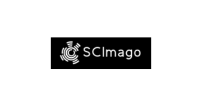A NEW SPERMDENSIMETER TO DETERMINE THE SPERM CONCENTRATION OF EQUINE SEMEN
DOI:
https://doi.org/10.5380/avs.v25i3.71796Keywords:
Neubauer, practical, reproduction, stallionAbstract
This study aimed to develop a spermdensimeter for evaluating semen of stallions in a practical and efficient manner. This method is an alternative to the standard method that utilizes a Neubauer chamber under field conditions, which is typically employed because the Karras spermdensimeter model (for bovine and swine) is not suitable for determining equine semen concentrations. Two spermdensimeter models were developed. The appliances were made out of acrylic material and each one with different dimensions and angulations, called Model A and Model B. We tested 123 semen samples from stallions to evaluate and calibrate the two spermdensimeter prototypes based on the Neubauer chamber. Samples were analyzed by two evaluators. These results were compared to those obtained using the Neubauer chamber. Linear regression was used to establish the scale of concentrations for each model. Additionally, the correlation between the scales and the values found using the Neubauer chamber was calculated. Linear regression demonstrated a precise adjustment for the concentration curves, resulting in r² = 0.9395 for Model A and r² = 0.9418 for Model B. The correlations for the concentrations were significant (p < 0.0001). They were high and negatively correlated, measuring -0.83 for Model A and -0.8 for Model B. Thus, this relationship was inversely proportional. We concluded that the spermdensimeters we developed were effective for evaluating stallion sperm concentrations. These models can be used in routine practices associated with equine reproduction, achieving the main purpose of this work.
Downloads
Published
How to Cite
Issue
Section
License
Authors that wish to publish in AVS agree with the following conditions:
- To keep copyright of the article and allow the AVS to publish the first time. The article will be licensed by Creative Commons - Atribuição 4.0 Internacional allowing the sharing of their work.
- Authors may distribute their work by other channel of distribution (ex.: local or public repository).
- Authors have the permission to publish their work online, using different channels (similar to above), even before the final editorial process.













